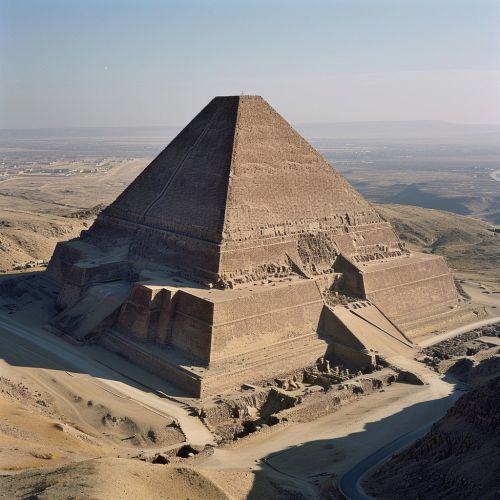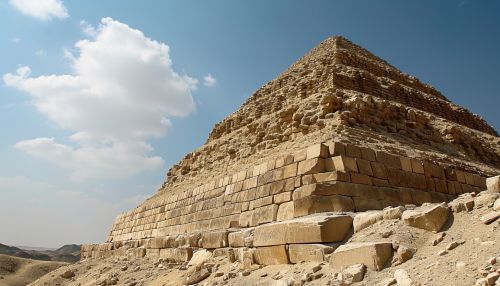Pyramid
Introduction
A pyramid is a structure whose outer surfaces are triangular and converge to a single point at the top, making the shape roughly a pyramid in the geometric sense. The base of a pyramid can be trilateral, quadrilateral, or of any polygon shape. As such, a pyramid has at least three outer triangular surfaces (at least four faces including the base). The square pyramid, with a square base and four triangular outer surfaces, is a common version.
History
Pyramids have been built by civilizations in many parts of the world. For thousands of years, the largest structures on Earth were pyramids: the Great Pyramid of Khufu in Egypt; the Ziggurats of Mesopotamia; the Mesoamerican Pyramids; and the Pyramid of the Sun and Pyramid of the Moon at Teotihuacan in Central Mexico.


Ancient Pyramids
The earliest pyramids were found in Saqqara, northwest of Memphis. The earliest among these is the Pyramid of Djoser (constructed 2630 BCE–2611 BCE) which was built during the third dynasty. This pyramid and its surrounding complex were designed by the architect Imhotep, and are generally considered to be the world's oldest monumental structures constructed of dressed masonry.
Egyptian Pyramids
The most famous pyramids are the Egyptian pyramids — huge structures built of brick or stone, some of which are among the world's largest constructions. The age of the pyramids reached its zenith at Giza in 2575–2150 BCE. Ancient Egyptians built these pyramids to bury their pharaohs and consorts. They believed that the pyramid acted as a means of transporting the soul of the deceased pharaoh to the heavens.
Mesoamerican Pyramids
A number of Mesoamerican cultures also built pyramid-like structures. Mesoamerican pyramids were usually stepped, with temples on top, more similar to the Mesopotamian ziggurat than the Egyptian pyramid. The largest pyramid by volume is the Great Pyramid of Cholula, in the Mexican state of Puebla. This pyramid is considered the largest monument ever constructed anywhere in the world, and is still being excavated.
Modern Pyramids
Modern pyramids, largely inspired by the ancient structures, have made a resurgence in the design of buildings. The Louvre Pyramid in Paris, France, is a glass pyramid that serves as an entrance to the Louvre Museum. The Walter Pyramid in Long Beach, California, is a sports arena that features a pyramid design.
Construction Techniques
There is no single construction technique that defines all pyramids. For the construction of the pyramids, ancient Egyptians had to solve complex problems related to geometry and physics. The construction techniques used for the pyramids are still the subject of ongoing debate.
Cultural Significance
Pyramids have significant cultural and symbolic meaning. They represent the essence of the civilizations that built them. For the Egyptians, the pyramid represented the primordial mound from which the earth was created. In Mesoamerican cultures, pyramids were often designed to represent the mountains, which were considered the homes of divine beings.
